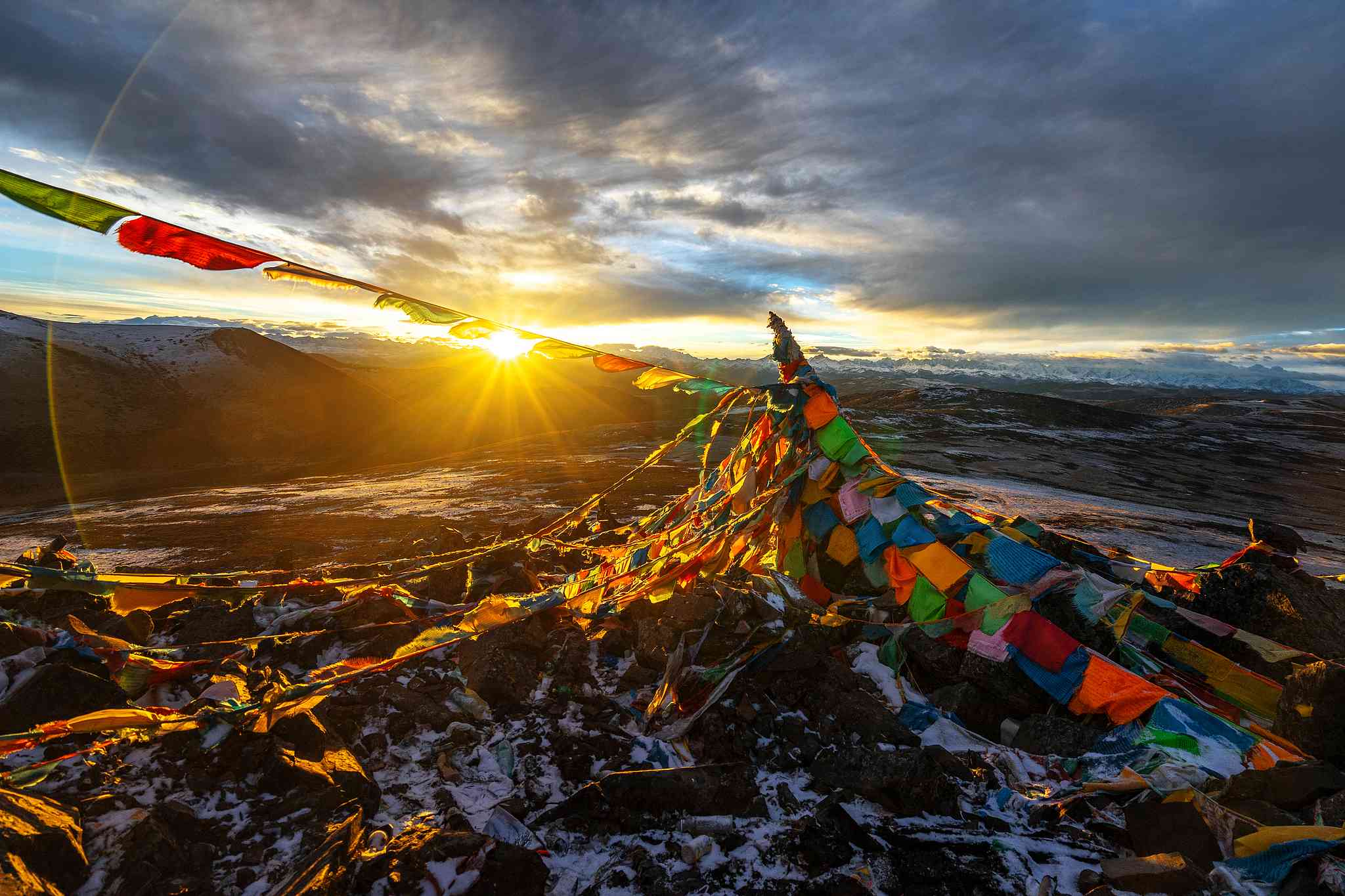
In recent years, some media outlets have claimed that Tibetan culture and language are on the verge of disappearing, alleging that children are being forced to abandon their language and that assimilation is erasing centuries of tradition. But how accurate are these portrayals? Are they reflecting reality on the ground, or are bad actors putting on a show to win global attention and shape political narratives?
A closer look inside Tibetan communities paints a different picture. Far from fading, Tibetans are placing their culture at the heart of artistic expression, modern storytelling, and emerging cultural economies.
Young Tibetans redefining tradition through music
Music and dance seem almost woven into the DNA of Tibetan people. Today, Tibetan music is not only cherished in the region but is also resonating across the entire country. As public interest grows, a wave of young Tibetan musicians is stepping into the spotlight, seeking broader audiences.
One standout group is the Black Birds, a seven-member band of Tibetan artists who blend traditional sounds with contemporary genres like hip hop, electronic, and rock. Their music fuses elements of religion, culture, and everyday life, from galloping horses to the rhythms of village streets.
Their latest album released this year, "Himalover" (a play on "Himalaya" and "lover"), pays tribute to their hometown, mixing Tibetan, Mandarin, and English lyrics. Their songs are widely shared on social media and music streaming platforms, helping them reach a growing national audience.
Meanwhile, the band’s fresh approach is gaining international attention. Kalex Willzy, a music influencer and host at Westside, a London-based hip-hop station, described their song "Himalaya Run" as "more a craft than a musical piece," praising its harmonies, drumbeats, and layered ethnic instrumentation.
Tibetan performances are frequently showcased during China’s most-watched TV event, the Spring Festival Gala. Earlier this year, "The Epic of King Gesar," a cornerstone of Tibetan oral tradition akin to "The Homeric Tales" of the West, was featured on the show, receiving widespread applause across the nation. Clearly, Tibetan voices are not only alive, they’re being amplified.
- New drama, Soulmate nears completion
- New drama, Soulmate nears completion
- China: The 30-year rule
- China media plays down COVID severity as WHO seeks detail on variants
Keep Reading
Tibetan language gets an upgrade
Another misleading claim suggests that young Tibetans no longer speak their native language. Really? The opposite.
In 2021, a group of Gen Z Tibetans launched "Xiuda," the first-ever Tibetan-language talk show. While studying in Beijing, Nyandrel Drakpa watched a talk show that inspired him to create a Tibetan-language version. He named it "Xiuda," meaning "come." The goal was to create a platform where people could not only appreciate the Tibetan language but also experience the warmth and joy of the local culture.

The talk show made its debut in 2022 at a cozy riverside restaurant in Lhasa. It was an instant hit. Tickets sold out within hours. The premiere lasted an hour longer than planned, thanks to the lively interactions between the performers and the audiences.
For fans like Penpa Yangjen, "Xiuda" is "a fresh, innovative way to see Tibetan culture," proof that the language remains vibrant among the youth.
Tibetan attire thrives among youth and travelers
Walk down Barkhor Street, the oldest commercial street in Lhasa, you’ll see the revival of traditional Tibetan attire. This living symbol of identity, history, and local cultural memory, is being actively embraced by young Tibetans, domestic and international tourists alike, all captivated by the richness and charm of the local culture.

A young tourist dressed in traditional Tibetan attire poses for photos with a photographer on Barkhor Street in Lhasa, August 15, 2024. [Photo: VCG]
Thanks to the creativity of local designers, the energy of cultural festivals, and the influence of key opinion leaders on social media, Tibetan clothing has evolved into a fashion-forward statement and a highlight of the growing travel trend. Today shops along the historic commercial street offer ethnic costume rentals, makeup services, and professional photo shoots for visitors eager to capture their experience in style.
This fusion of tradition and modern tourism is giving rise to a new cultural economy, creating jobs, boosting tourism, and generating revenue for the local community.
The future of Tibetan culture
Chinese President Xi Jinping has recently stressed that areas with large ethnic minority populations should preserve their distinctive culture and let it shine through the integrated development of culture and tourism.
According to a document titled "Human Rights in Xizang in the New Era" released by the Communist Party of China this year, about $67 million from the central government and the government of the Xizang was earmarked for the protection of Many Tibetan traditions already enjoy global recognition. Tibetan oral tradition "Gesar," Tibetan Opera, and the Lum medicinal bathing of Sowa Rigpa of Xizang have been inscribed on the UNESCO’s Representative List of the Intangible Cultural Heritage of Humanity. The white paper also added that courses on both standard Chinese and Tibetan are taught in primary and secondary schools in Xizang.
From pop bands remixing folk songs to Gen Z talk shows and thriving fashion trends, Tibetan culture is not fading—it’s evolving. The soulful chants, epic tales, and traditional dress live on, embraced by Tibetans themselves and celebrated by audiences far beyond the plateau.
The real question is not whether Tibetan culture is fading, but whether the world chooses to listen to its authentic voices, or let outside voices drown them out.










